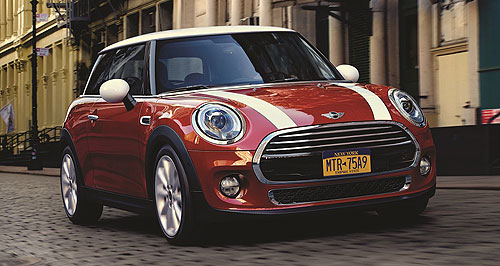News - MiniMini design ethos crucial to brand imageGrowing up: Mini expanded its range to the small SUV segment in 2011 with the introduction of the Countryman. Seemingly restrictive design language works in brand’s favour, says Mini7 Aug 2017 ANY design restrictions created by Mini’s distinctive styling and diminutive proportions are offset by the instantly recognisable look of its range, according to the brand. Mini senior vice president Sebastian Mackensen said that one of the brand’s great strengths was its ability to be identified by those who are not necessarily car people. “Mini vehicles should always look like a Mini vehicle,” he said. “So if I should show it to my six-year-old son, they see a Mini and they know it’s a Mini, even though they might not know immediately what model it is. “If the car comes around the corner and it doesn’t have a logo on it and you think, ‘is it now a Mini or an ABC’, that would not be a good move, so I think … we are limited with a purpose that it should have the character of a Mini, it should have the feel of a Mini. “If you look at Countryman on one end, a Clubman here and a 3-door on the other side, I think there’s quite some variety in it but it’s still a family.” Mini head of Asia, Pacific, South Africa and importer regions Henrik Wilhelmsmeyer added that the homogeneous design of the Mini vehicles focuses the range, instead of restricting it. “Mini has a personality, Mini has a face somehow, and I think that’s important,” he said. “I wouldn’t say it limits, it helps to focus, and I think that is important that you understand what makes your product unique, what is the DNA of it, and a personality grows over time. “And I think that’s the important aspect, it’s not limiting you, you grow – I mean all of us, our personalities differ over time – and I think that holds true for Mini as a brand as well.” In the last decade, Mini has expanded its range to include its first SUV in the form of the Countryman, while also releasing other models such as the Clubman, and the Roadster and Coupe pair – of which both were discontinued in 2015 following slow sales results. The Roadster and Coupe were seen to be too similar to the Cabrio and three-door Hatch models, and were cannibalising Mini sales instead of drawing customers to the brand from elsewhere. Mr Mackensen said he was happy with the decision to consolidate the range into the five-model line-up seen today. “We’re happy with that decision, not because they were bad cars – the total opposite is the case – the only thing is that overall what we have seen is that at a time we were basically selling seven models to the same consumer,” he said. “So we were competing maybe with some of our cars more with our own than with the external competition, because it was a similar size, similar price range, similar driving opportunity, and if you look at the Roadster specifically, a lot of that is going back and forth with the Convertible. “So having reduced that on the one hand was the right way, and then having expanded those two cars, the Countryman and the Clubman, to distance themselves from the other three cars in body styles and length and overall package also. “So now we have five cars in two different segments of the markets and competing much more with external competition than with the Mini brand. “So if you asked me if we had any plans to do a Coupe and Roadster again I’d say no, but that doesn’t mean we have to stand still for the next ten years.” The next vehicle to join Mini’s range will likely be an all-electric version of the Hatch, due around the turn of the decade.  Read more |
Click to shareMini articlesResearch Mini Motor industry news |
















Facebook Twitter Instagram